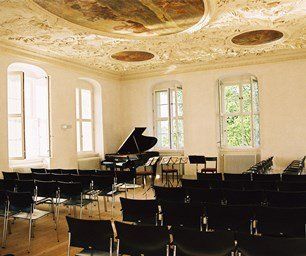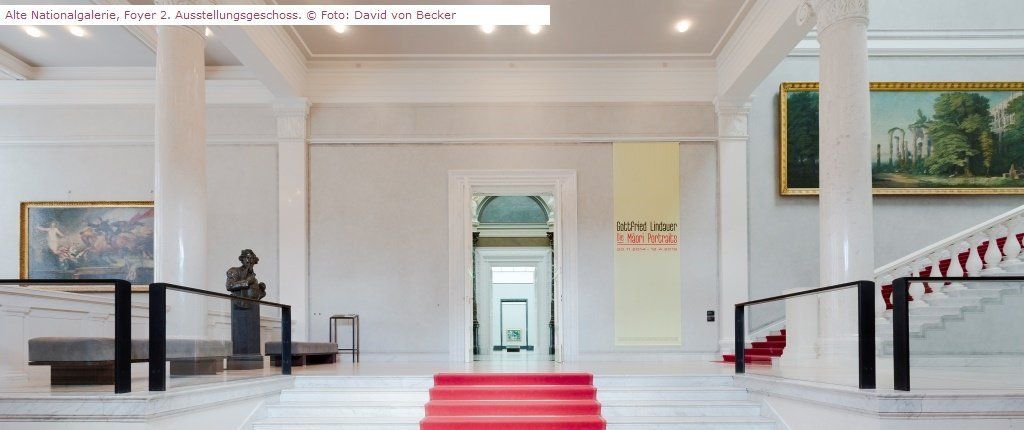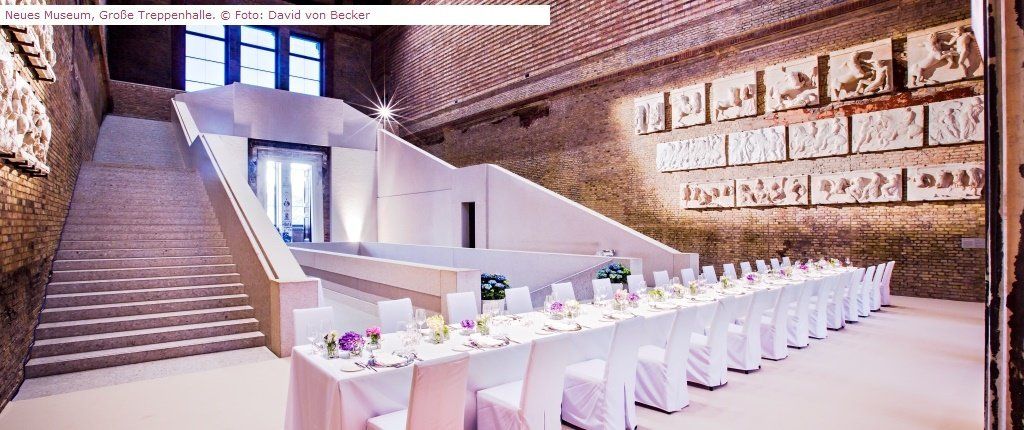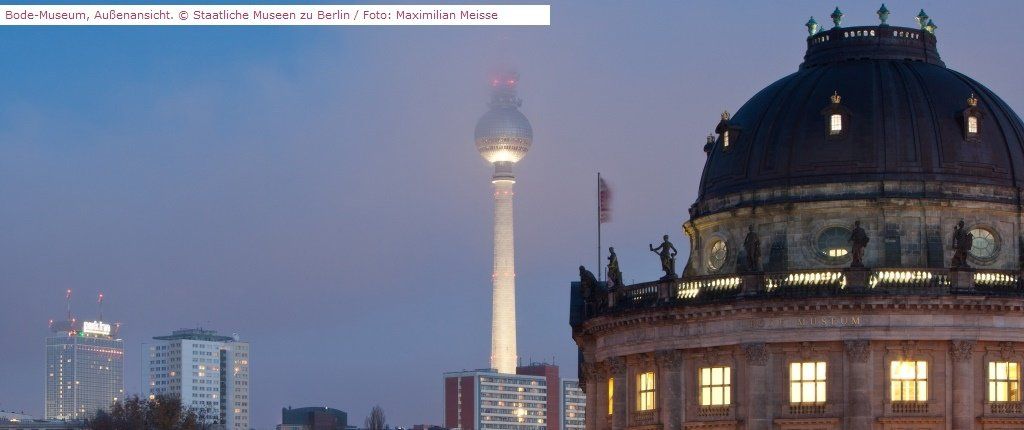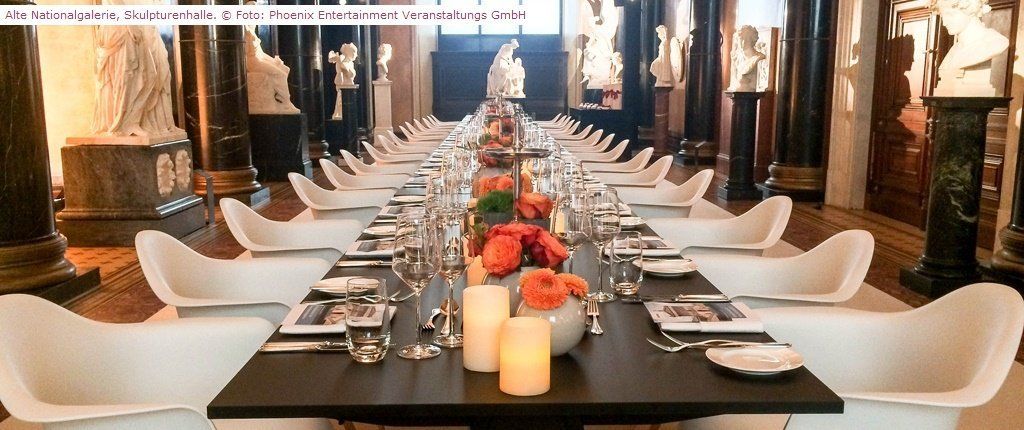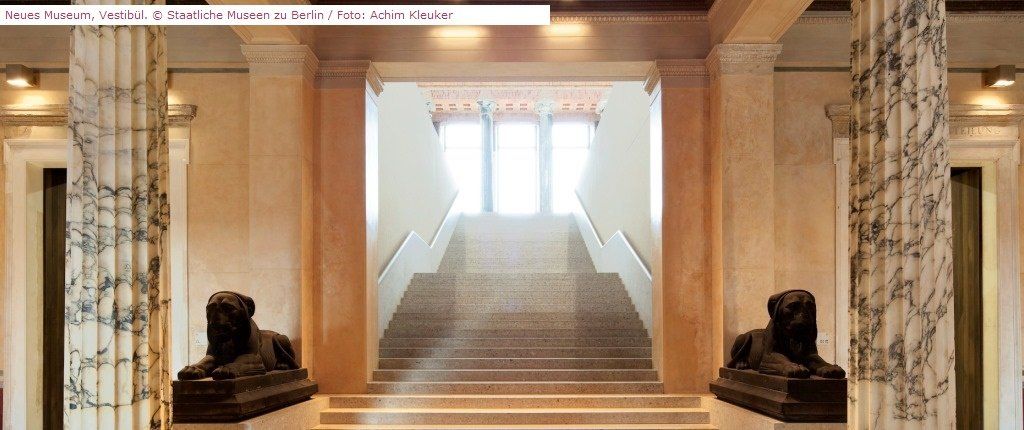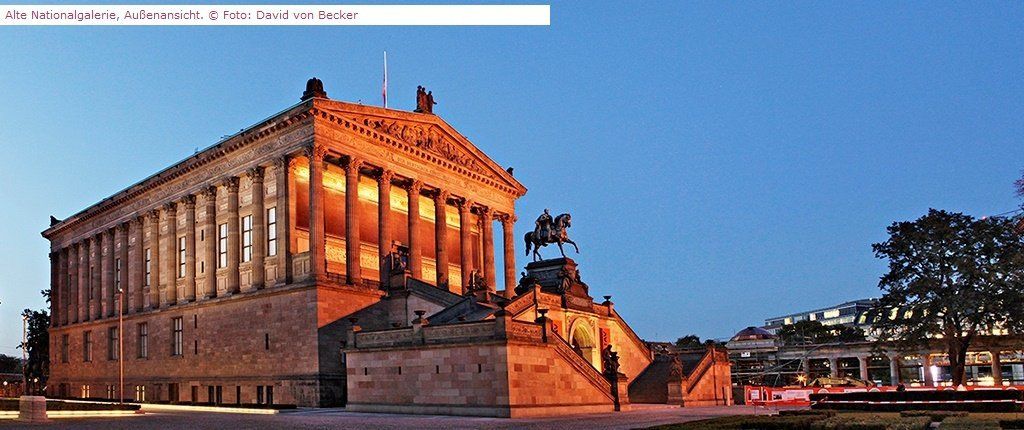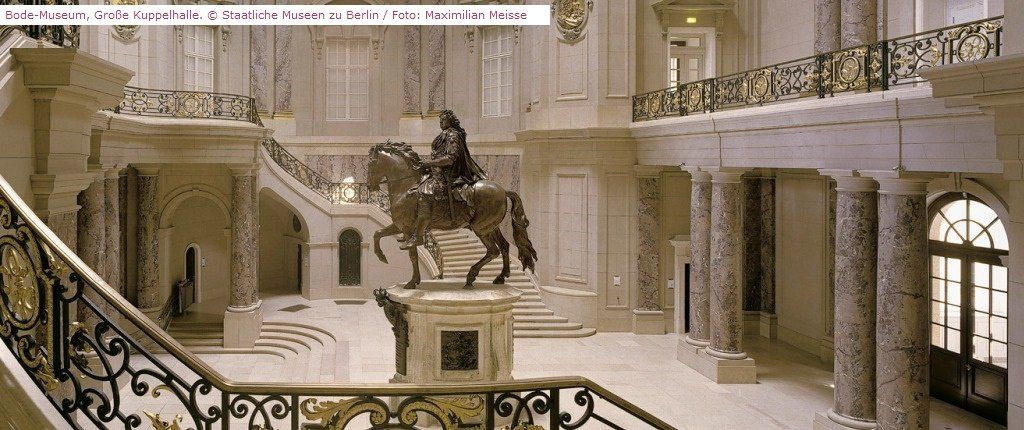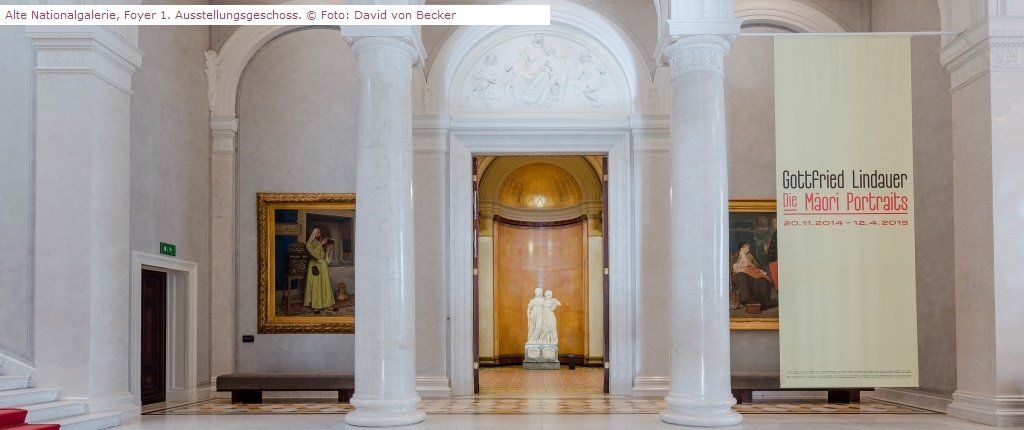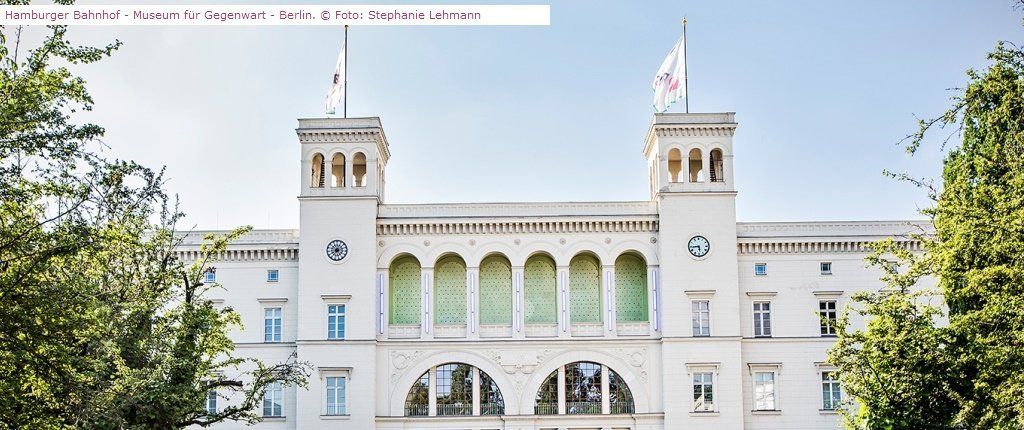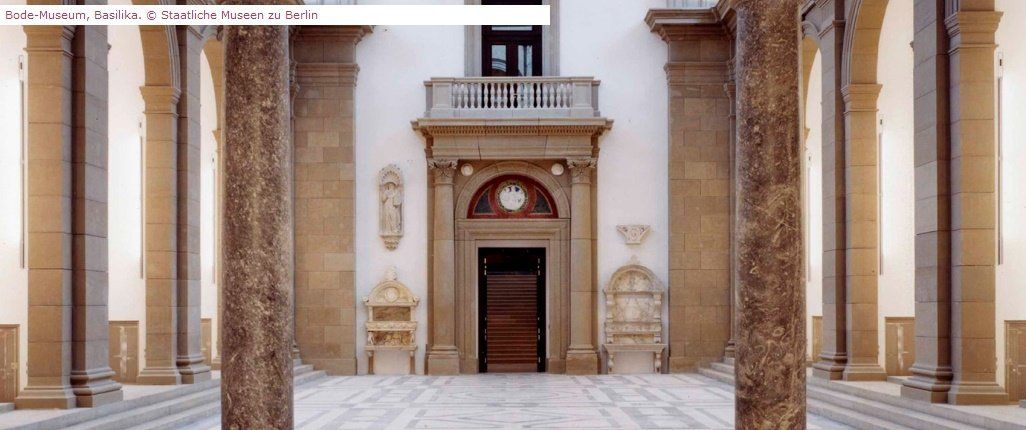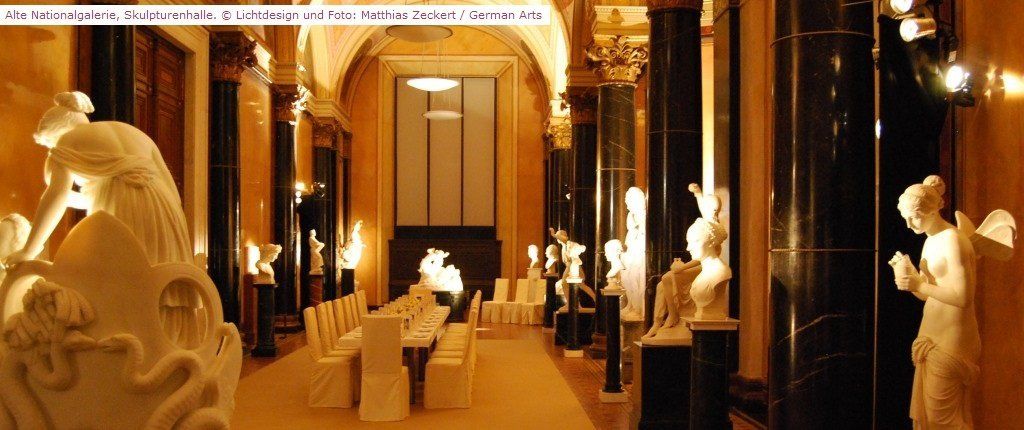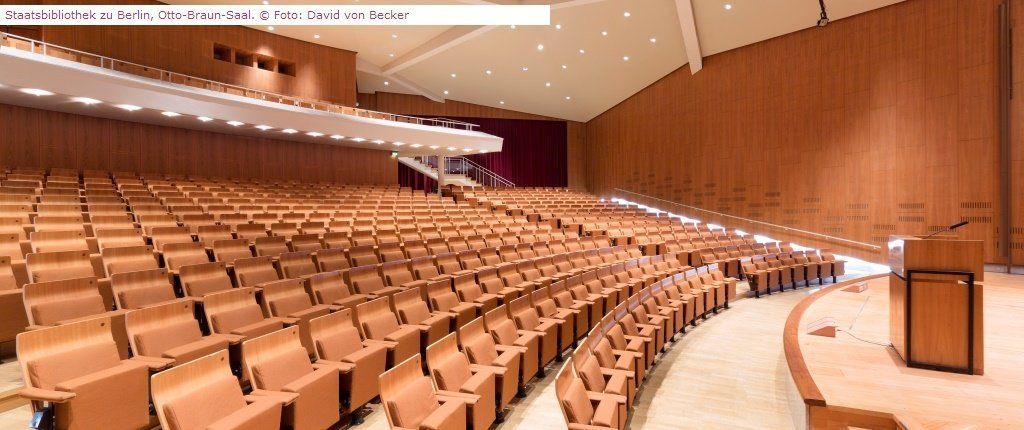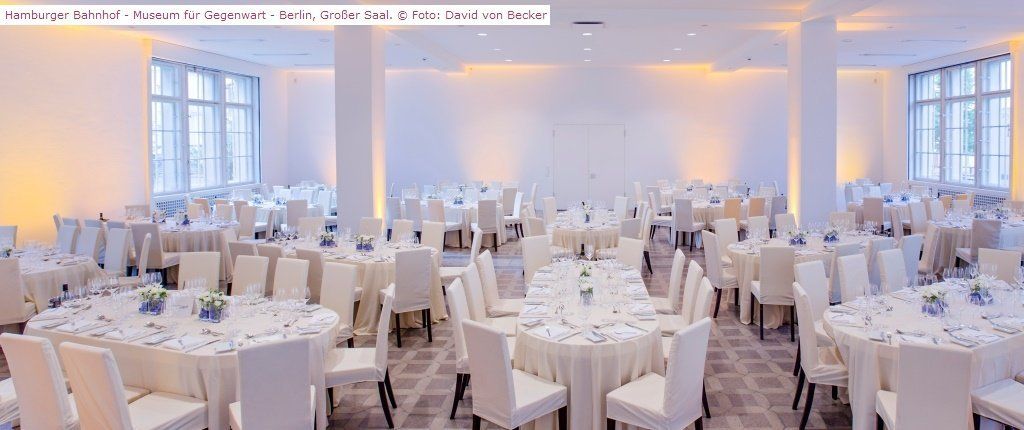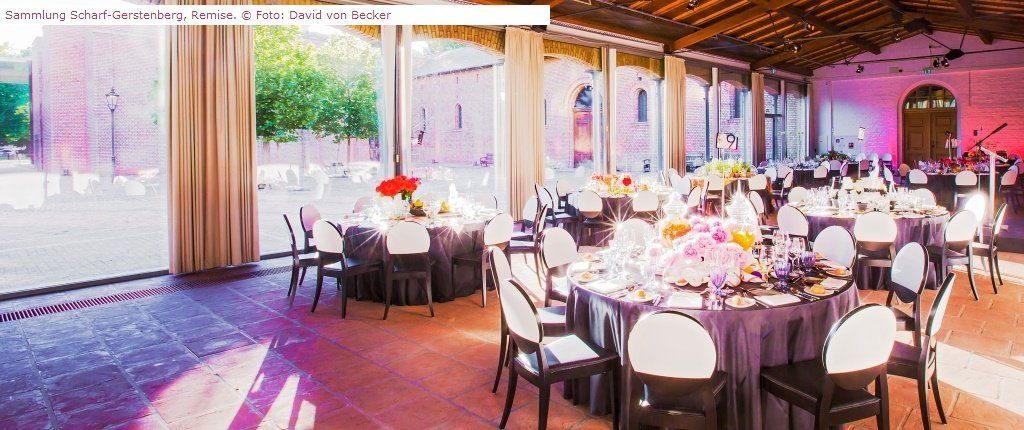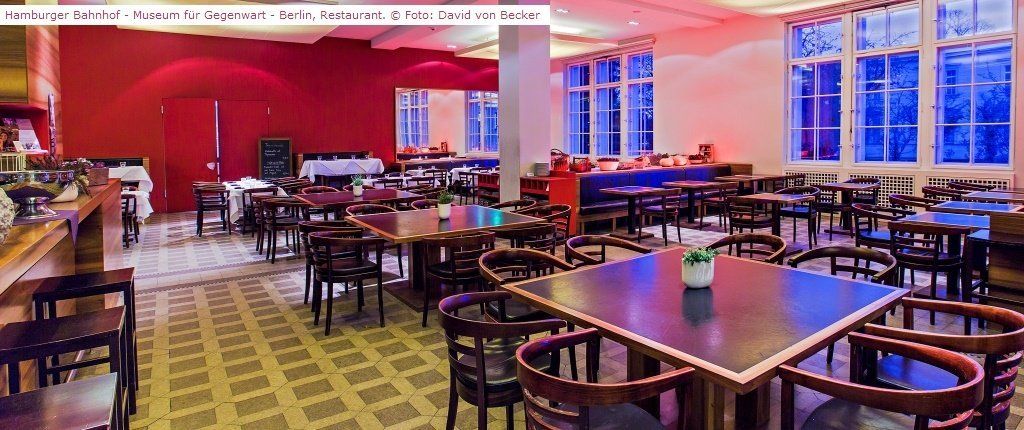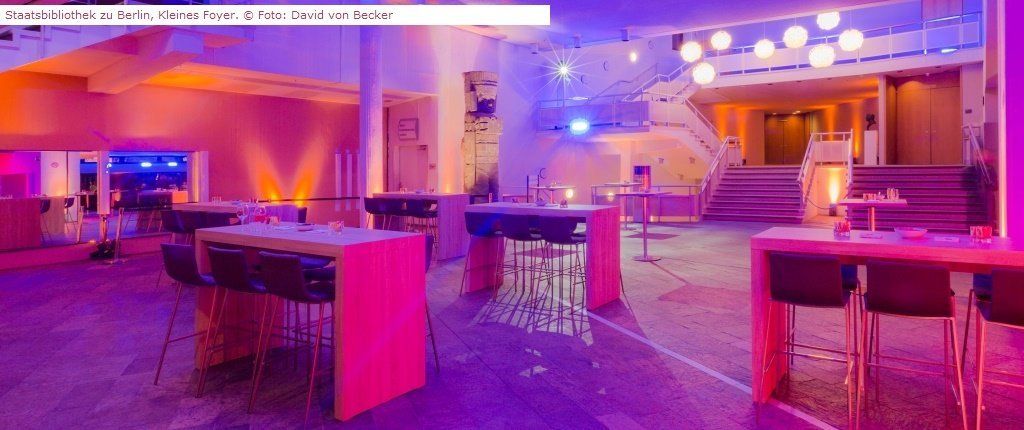You have the occasion, we have the location!
Enjoy art, welcome guests and dine in the Staatliche Museen zu Berlin.
When you think of the museums in Berlin, the Museum Island, the Pergamon Museum or the bust of Queen Nefertiti possibly cross your mind. Perhaps you also think of the Staatliche Museen zu Berlin, for to these belong the three.
Thus they are part of a world-famous Universal Museum of 16 houses for the preservation, research and mediation of treasures of art and culture of the entire history of humanity. Something you may not know: the Staatliche Museen zu Berlin can do more!
They can change into highly attractive event locations. And you can be the host there!
Museum&Location is your contact for exclusive events in the Staatliche Museen zu Berlin and the Staatsbibliothek zu Berlin (state library of Berlin). Whether dinner, gala, summer party or conference - Museum&Location assists you in all issues concerning the planning of your event and rents out the suitable location for your special occasion.
The best thing about it:
With your event at the Staatliche Museen zu Berlin you do not only give your guests and yourself a treat but in addition you do a good deed. The proceeds of your event will be devoted to the Staatliche Museen zu Berlin at 100% and will finance future exhibition projects.
When you think of the museums in Berlin, the Museum Island, the Pergamon Museum or the bust of Queen Nefertiti possibly cross your mind. Perhaps you also think of the Staatliche Museen zu Berlin, for to these belong the three.
Thus they are part of a world-famous Universal Museum of 16 houses for the preservation, research and mediation of treasures of art and culture of the entire history of humanity. Something you may not know: the Staatliche Museen zu Berlin can do more!
They can change into highly attractive event locations. And you can be the host there!
Museum&Location is your contact for exclusive events in the Staatliche Museen zu Berlin and the Staatsbibliothek zu Berlin (state library of Berlin). Whether dinner, gala, summer party or conference - Museum&Location assists you in all issues concerning the planning of your event and rents out the suitable location for your special occasion.
The best thing about it:
With your event at the Staatliche Museen zu Berlin you do not only give your guests and yourself a treat but in addition you do a good deed. The proceeds of your event will be devoted to the Staatliche Museen zu Berlin at 100% and will finance future exhibition projects.
For any shooting requests concerning a museum of the Staatliche Museen zu Berlin or a house of the Staatsbibliothek zu Berlin please contact us: kontakt(at)museum-location.de.
Please note the mandatory
guidelines
for filming and shooting in the
Staatliche Museen zu Berlin
and the
Staatsbibliothek zu Berlin. For getting the permission for your shooting we kindly ask for your responds of the questions deposited
here.
Mitte - Museum Island
Besuchen Sie uns
Alte Nationalgalerie
Friedrich August Stüler designed the Alte Nationalgalerie inspired by a sketch by Friedrich Wilhelm IV. It was not built until his death between 1866 and 1876 under the supervision of Johann Heinrich Strack. As part of the ensemble Museum Island it belongs to the UNESCO World Cultural Heritage Site since 1999.
In keeping with the architecture the Alte Nationalgalerie presents sculptures and paintings of the 19th century. The collection brings together many well-known artists such as Caspar David Friedrich, Carl Spitzweg, Adolph Menzel, Claude Monet, Edouard Manet, Auguste Renoir and Max Liebermann.
The Sculpture Hall with the “Two Princesses” by Johann Gottfried Schadow offers an impressive setting for a very exclusive dinner. Between works by Arnold Böcklin, Anselm Feuerbach and Hans von Marées lectures and ceremonial acts can also take place in the Deutsch-Römer-Saal (German-Roman Hall).
In keeping with the architecture the Alte Nationalgalerie presents sculptures and paintings of the 19th century. The collection brings together many well-known artists such as Caspar David Friedrich, Carl Spitzweg, Adolph Menzel, Claude Monet, Edouard Manet, Auguste Renoir and Max Liebermann.
The Sculpture Hall with the “Two Princesses” by Johann Gottfried Schadow offers an impressive setting for a very exclusive dinner. Between works by Arnold Böcklin, Anselm Feuerbach and Hans von Marées lectures and ceremonial acts can also take place in the Deutsch-Römer-Saal (German-Roman Hall).
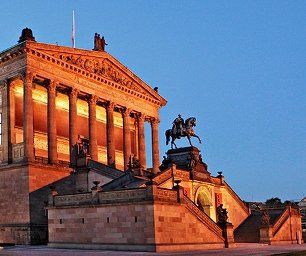
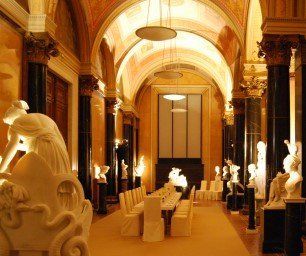
Altes Museum
The Altes Museum, built between 1823 and 1830 according to blueprints by Karl Friedrich Schinkel, is one of the most important works in the architecture of Classicism and was the first public museum in Prussia. As part of the ensemble Museum Island it belongs to the UNESCO World Cultural Heritage Site since 1999.
The Collection of Classical Antiquities presents art and culture of the ancient Greeks, Romans and Etruscans under the title “Ancient Worlds” in the Altes Museum. Arranged topically, the worship of the gods, martial heroism, life and death in the ancient world are presented descriptive.
During the warmer months, the gallery in the upper floor with its panoramic view over the Lustgarten (“Pleasure Garden”) offers the opportunity for standing receptions. The colonnade at the entrance area can be used for exclusive receptions in fine weather.
The Collection of Classical Antiquities presents art and culture of the ancient Greeks, Romans and Etruscans under the title “Ancient Worlds” in the Altes Museum. Arranged topically, the worship of the gods, martial heroism, life and death in the ancient world are presented descriptive.
During the warmer months, the gallery in the upper floor with its panoramic view over the Lustgarten (“Pleasure Garden”) offers the opportunity for standing receptions. The colonnade at the entrance area can be used for exclusive receptions in fine weather.
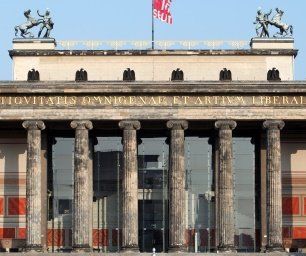
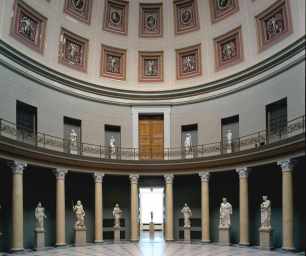
Bode-Museum
Supported by General Wilhelm von Bode the court architect Ernst von Ihne built the neo-baroque Kaiser-Friedrich-Museum between 1897 and 1904, today’s Bode-Museum. As part of the ensemble Museum Island it belongs to the UNESCO World Cultural Heritage Site since 1999.
The Sculpture Collection, the Museum of Byzantine Art, the Numismatic Collection and parts of the Gemäldegalerie (Old Master Paintings) are presented in the Bode-Museum. In parts the artworks are presented today in accordance to the original concept and in context of the original ceilings, fireplaces, doorjambs, tapestries and furniture.
The so-called Basilica in the centre of the museum, which stretches over two floors and with its exhibited art, was supposed to give the impression of a Renaissance church room. It provides a festive setting for exclusive dinners. Receptions in the Great Domed Hall (Große Kuppelhalle) at the entrance are also possible.
The Sculpture Collection, the Museum of Byzantine Art, the Numismatic Collection and parts of the Gemäldegalerie (Old Master Paintings) are presented in the Bode-Museum. In parts the artworks are presented today in accordance to the original concept and in context of the original ceilings, fireplaces, doorjambs, tapestries and furniture.
The so-called Basilica in the centre of the museum, which stretches over two floors and with its exhibited art, was supposed to give the impression of a Renaissance church room. It provides a festive setting for exclusive dinners. Receptions in the Great Domed Hall (Große Kuppelhalle) at the entrance are also possible.
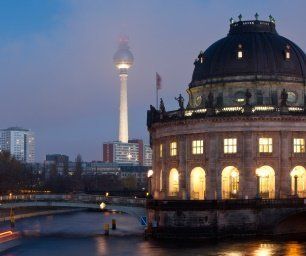

Neues Museum
The Neues Museum, built according to the plans of Friedrich August Stüler between 1841 and 1855, belongs to the UNESCO World Cultural Heritage Site since 1999. Between 2003 and 2009, the British architect David Chipperfield replaced the damages of the Second World War with modern architectural elements.
The Neues Museum presents the Egyptian Museum and Papyrus Collection, the Museum of Prehistory and Early History and individual objects of the Collection of Classical Antiquities. The most famous exhibits are the bust of Queen Nefertiti and the “Berlin Gold Hat”.
The vestibule with two stone lions invites to receptions. In the upper foyer in front of the impressive staircase, which David Chipperfield inserted seamlessly into the centre of the building, even small exclusive dinners are possible.
The Neues Museum presents the Egyptian Museum and Papyrus Collection, the Museum of Prehistory and Early History and individual objects of the Collection of Classical Antiquities. The most famous exhibits are the bust of Queen Nefertiti and the “Berlin Gold Hat”.
The vestibule with two stone lions invites to receptions. In the upper foyer in front of the impressive staircase, which David Chipperfield inserted seamlessly into the centre of the building, even small exclusive dinners are possible.
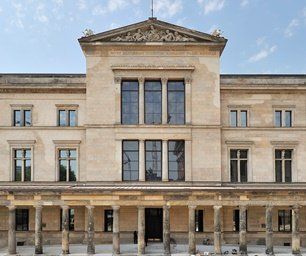
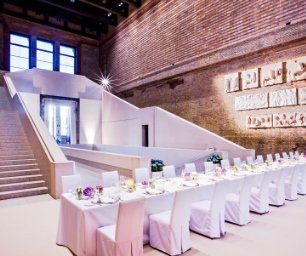
Pergamonmuseum.
The Panorama
The temporary exhibition building "Pergamonmuseum. The Panorama" is presenting the project "PERGAMON. Masterpieces from the Ancient Metropolis with a 360° Panorama by Yadegar Asisi".
Beside the panorama of the ancient city Pergamon of the year 129 AD the museum presents highlights of the National Museums of Berlin's Antikensammlung.
Amongst other are exposed parts of the Pergamon Altar like the Telephos frieze, large female statues of the courtyard and the sculptures of the rooftop.
For events could be used the generous cafe area in the second floor of the foyer. Dine an celebrate in front of the impressive picture-windows with a view of the Bode-Museum and the Kupfergraben.
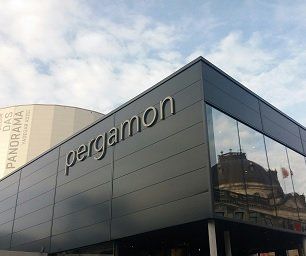
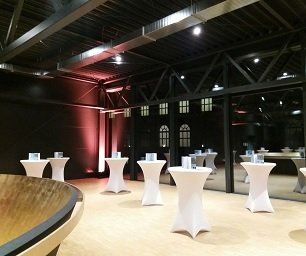
Pergamonmuseum
The Pergamonmuseum was built between 1910 and 1930 according to the design of Alfred Messel under the supervision of Ludwig Hoffmann. As part of the ensemble Museum Island it belongs to the UNESCO World Cultural Heritage Site since 1999. Currently, the building is successively restored under the supervision of Oswald Matthias Unger.
The Museum of the Ancient Near East, the Museum of Islamic Art and parts of the Collection of Classical Antiquities are housed in the Pergamonmuseum. In addition to everyday and cultural objects, jewellery and book design, the monumental reconstructions of archaeological buildings impress the most.
ATTENTION!
Due to extensive construction work, the Pergamonmuseum is closed until spring 2027.
The Museum of the Ancient Near East, the Museum of Islamic Art and parts of the Collection of Classical Antiquities are housed in the Pergamonmuseum. In addition to everyday and cultural objects, jewellery and book design, the monumental reconstructions of archaeological buildings impress the most.
ATTENTION!
Due to extensive construction work, the Pergamonmuseum is closed until spring 2027.
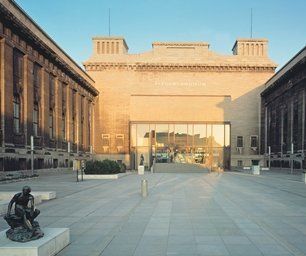
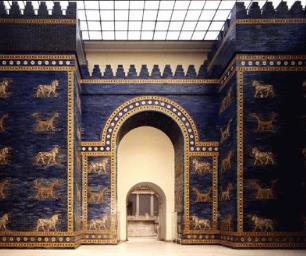
The James-Simon-Galerie is the new central entrance building and visitor centre on Berlin's Museum Island. It was named after James Simon (1851-1932), one of the most important patrons of the National Museums in Berlin (Staatliche Museen zu Berlin).
The house is part of the Master Plan for Museum Island – adopted in 1999 to preserve the UNESCO World Heritage, but also to transform it into a contemporary museum complex at the same time.The new building was designed by David Chipperfield Architects.
The James-Simon-Galerie serves as the sole entrance to the Pergamonmuseum and, via the underground Archaeological Promenade, as one of two entrances to the Neues Museum.
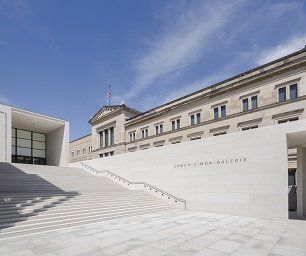
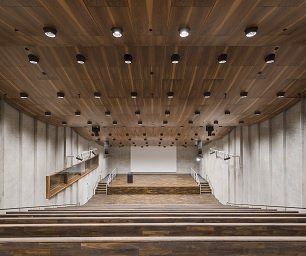
Built by Karl Friedrich Schinkel between 1824 and 1830 in the neo-Gothic style, the church has housed unique sculptures and original plaster molds from the collection of the National Gallery since 1987.
The parade piece of the comprehensive collection of 19th-century sculpture is doubtlessly Johann Gottfried Schadow's original plaster cast of the double sculpted portrait of the “Crown Princess Luise of Prussia and her Sister Princess Friederike of Mecklenburg-Strelitz” (1795), also known under the abbreviated title "Princess Group".
The single-nave church with its upthrusting architecture offers a festive setting for small exclusive standing receptions and dinners surrounded by timelessly beautiful art of sculpture.
The single-nave church with its upthrusting architecture offers a festive setting for small exclusive standing receptions and dinners surrounded by timelessly beautiful art of sculpture.
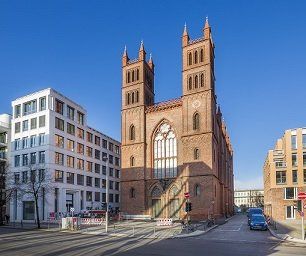
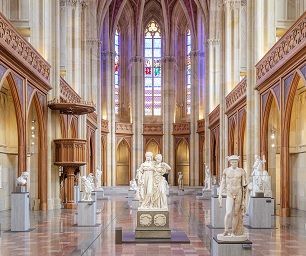
Tiergarten
Hamburger Bahnhof - Nationalgalerie der Gegenwart
The late classicist building of the Hamburger Bahnhof, which was built in 1874, served as a railway terminus for the route Berlin – Hamburg until the end of the 19th century. Josef Paul Kleihues transformed the Hamburger Bahnhof into a modern venue between 1992 and 1996.
In this building, the Nationalgalerie presents art from 1960 to the present day. In addition to the permanently exhibited Erich Marx collection, which includes works by artists such as Joseph Beuys and Andy Warhol, the museum shows donations from the Friedrich Christian Flick Collection and the Sammlung Marzona (Marzona Collection).
The Hamburger Bahnhof, in the northern centre of the city, not far from the government district and right on the main railway station (Hauptbahnhof), provides space for day and evening events of all kind. During the warmer months the courtyard can be used for receptions.
In this building, the Nationalgalerie presents art from 1960 to the present day. In addition to the permanently exhibited Erich Marx collection, which includes works by artists such as Joseph Beuys and Andy Warhol, the museum shows donations from the Friedrich Christian Flick Collection and the Sammlung Marzona (Marzona Collection).
The Hamburger Bahnhof, in the northern centre of the city, not far from the government district and right on the main railway station (Hauptbahnhof), provides space for day and evening events of all kind. During the warmer months the courtyard can be used for receptions.
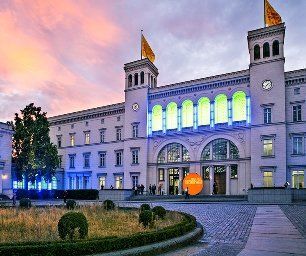
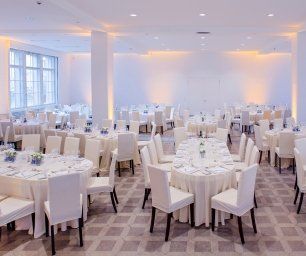
In the heart of Berlin - between Potsdamer Platz and the embassy district - is the Kulturforum. Based on a design by the architect Rolf Gutbrod from 1969, an ensemble of four museums was developed until 1998, which is connected by a central entrance hall.
The Kulturforum presents paintings of the 13th to 18th century in the Gemäldegalerie (Old Master Paintings), art-historical literature in the Kunstbibliothek (Art Library), drawings and watercolours at the Kupferstichkabinett (Museum of Prints and Drawings) as well as arts and crafts from the Middle Ages to the present at the Kunstgewerbemuseum (Museum of Decorative Arts).
The spacious entrance hall provides space for events with numerous guests. In the warmer months receptions can take place on the Piazetta in front of the Kulturforum overlooking the magnificent architectural backdrop of the nearby Potsdamer Platz.
The Kulturforum presents paintings of the 13th to 18th century in the Gemäldegalerie (Old Master Paintings), art-historical literature in the Kunstbibliothek (Art Library), drawings and watercolours at the Kupferstichkabinett (Museum of Prints and Drawings) as well as arts and crafts from the Middle Ages to the present at the Kunstgewerbemuseum (Museum of Decorative Arts).
The spacious entrance hall provides space for events with numerous guests. In the warmer months receptions can take place on the Piazetta in front of the Kulturforum overlooking the magnificent architectural backdrop of the nearby Potsdamer Platz.
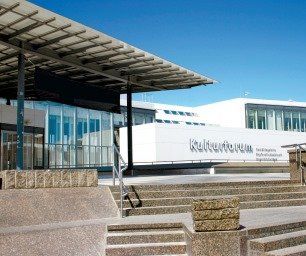
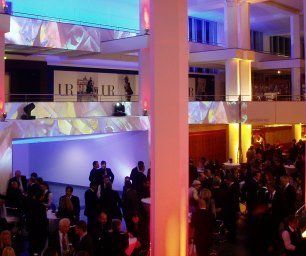
Neue Nationalgalerie
The Neue Nationalgalerie, Mies van der Rohe’s impressive Bauhaus-Temple of glass and steel, was built between 1967 and 1968. It was the first building of Berlin’s Kulturforum, which is located south of the Tiergarten and west of the Potsdamer Platz.
The spectrum of its exquisite collection of European paintings and sculpture of the 20th century ranges from Classic Modern Art to the art of the 60ties. On display are works by artists such as Pablo Picasso, Paul Klee, Edvard Munch, Ernst Ludwig Kirchner, Lyonel Feininger, Otto Dix and Oskar Kokoschka.
The foyer area next to the spectacular upper exhibition hall offers space for exclusive dinner invitations and receptions. Guided tours and free visits through the unique collection are possible outside opening hours.
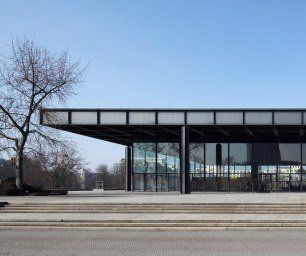
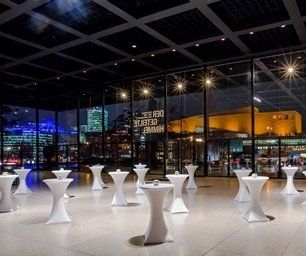
Staatsbibliothek zu Berlin
Built between 1967 and 1978 based on plans by the famous architect Hans Scharoun and standing vis-à-vis the Berlin Philharmonie also constructed by him, the Staatsbibliothek zu Berlin is part of the Kulturforum. The building has a remarkable facade made of gold anodised aluminium wall panels.
The Staatsbibliothek zu Berlin is the largest academic universal library in Germany. Its special collections include even oriental manuscripts, (music) autographs, maps and historical journals. The building on Potsdamer Strasse is a research library for the modern holdings as from 1946.
The Staatsbibliothek zu Berlin is equipped with two lecture halls. The pentagonal Otto-Braun-Auditorium with fixed theatre style seating has excellent acoustics. Together with the Simón-Bolívar-Auditorium it is accessible via a separate entrance and foyer.
The Staatsbibliothek zu Berlin is the largest academic universal library in Germany. Its special collections include even oriental manuscripts, (music) autographs, maps and historical journals. The building on Potsdamer Strasse is a research library for the modern holdings as from 1946.
The Staatsbibliothek zu Berlin is equipped with two lecture halls. The pentagonal Otto-Braun-Auditorium with fixed theatre style seating has excellent acoustics. Together with the Simón-Bolívar-Auditorium it is accessible via a separate entrance and foyer.
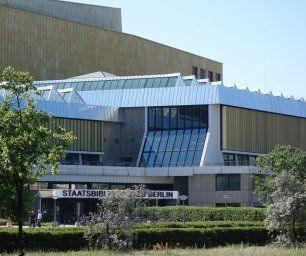
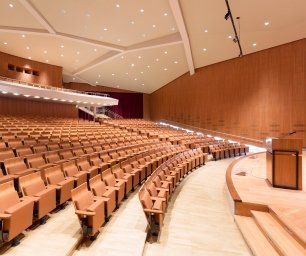
Charlottenburg
Museum Berggruen
Opposite to Schloss Charlottenburg, the stables of King Friedrich Wilhelm IV were built in classicist style in 1851, according to the plans by Friedrich August Stüler. Since 1996, the National Gallery presents the art collection of Heinz Berggruen in the westerly Stüler building.
In the year 2000, the Stiftung Preußischer Kulturbesitz (Prussian Cultural Heritage Foundation) could purchase the collection. When Heinz Berggruen died in 2007, his family decided to lend further artworks to the museum. To properly exhibit these works, in 2013 the museum took over the neighbouring building which once served as the commandant's quarters for the Prussian military.
In the year 2000, the Stiftung Preußischer Kulturbesitz (Prussian Cultural Heritage Foundation) could purchase the collection. When Heinz Berggruen died in 2007, his family decided to lend further artworks to the museum. To properly exhibit these works, in 2013 the museum took over the neighbouring building which once served as the commandant's quarters for the Prussian military.
The outstanding collection of works of Classic Modernism mainly shows works by Pablo Picasso under the title “Picasso and his time”. In addition, mainly works by Paul Klee, Alberto Giacometti and Henri Matisse are presented.
ATTENTION
The Berggruen Museum goes on tour: The exhibition tour brings important masterpieces by Picasso, Matisse, Cézanne and Klee to Japan, China and Paris. The house will be closed for basic repairs from September 5, 2022; the reopening is planned for 2025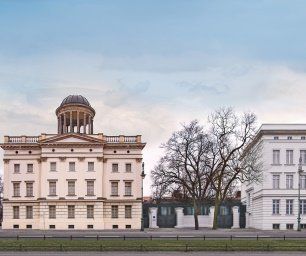
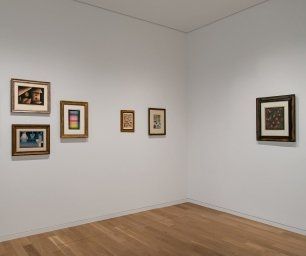
Museum für Fotografie
The neoclassical building of today’s Museum für Fotografie was built between 1908 and 1909, opposite to the train station Zoologischer Garten, according to the plans of Heino Schmieden and Julius Boethke. It initially served as a casino for the Prussian officer corps of the Berlin Landwehr division.
The Collection of Photography, a division of the Art Library, shows temporary exhibitions on all forms of photography from the 19th to the 20th century in the restored Kaisersaal. Alongside, the Helmut Newton Foundation presents works by Helmut Newton and his companions as permanent loans on two floors.
The Fürstensaal adjacent to the Kaisersaal was designed specifically for lecture events. Beyond that, it can also be used
for receptions and dinners. The lobby of the building with its famous “Big Nudes” by Helmut Newton also provides the possibility for receptions.
The Collection of Photography, a division of the Art Library, shows temporary exhibitions on all forms of photography from the 19th to the 20th century in the restored Kaisersaal. Alongside, the Helmut Newton Foundation presents works by Helmut Newton and his companions as permanent loans on two floors.
The Fürstensaal adjacent to the Kaisersaal was designed specifically for lecture events. Beyond that, it can also be used
for receptions and dinners. The lobby of the building with its famous “Big Nudes” by Helmut Newton also provides the possibility for receptions.
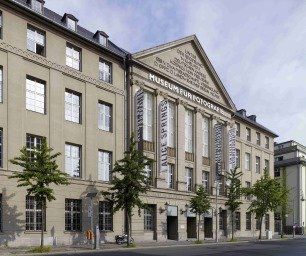
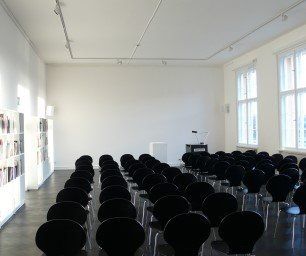
Opposite to Schloss Charlottenburg, Friedrich August Stüler built the Royal Guardhouse in 1851. The Sammlung Scharf-Gerstenberg is located easterly in the so-called Stüler buildings and the adjacent stables.
Titled “Surreal Worlds” top-class works are presented by the Surrealists and their precursors, from the holdings of the "Stiftung Sammlung Dieter Scharf zur Erinnerung an Otto Gerstenberg" (the foundation of the Dieter Scharf collection in remembrance of Otto Gerstenberg) including works by artists such as Hans Bellmer, Francisco de Goya, Salvador Dalí, René Magritte and Max Ernst.
Receptions, dinners and lecture events can take place in the Remise (coach house), which adjoins the Marstall (royal stables) and offers direct access to the courtyard. Since the Remise does not serve as an exhibition space, it is also available during the day.
Titled “Surreal Worlds” top-class works are presented by the Surrealists and their precursors, from the holdings of the "Stiftung Sammlung Dieter Scharf zur Erinnerung an Otto Gerstenberg" (the foundation of the Dieter Scharf collection in remembrance of Otto Gerstenberg) including works by artists such as Hans Bellmer, Francisco de Goya, Salvador Dalí, René Magritte and Max Ernst.
Receptions, dinners and lecture events can take place in the Remise (coach house), which adjoins the Marstall (royal stables) and offers direct access to the courtyard. Since the Remise does not serve as an exhibition space, it is also available during the day.
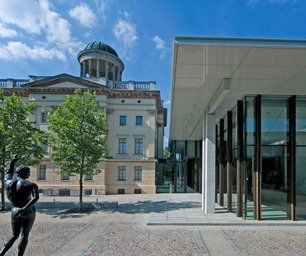
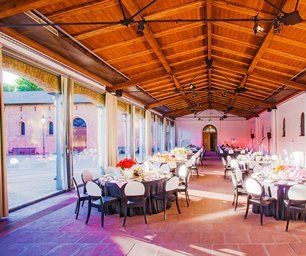
Dahlem
Museum Europäischer Kulturen
The neoclassical-style building was constructed between 1914 and 1923 according to plans by the well-known architect Bruno Paul. The garden with large, old beech trees in front of the prestigious entrance and the driveway on both sides give the building a palatial character.
Today it houses the Museum Europäischer Kulturen. Since 2005 the museum has been showing a cross-section of its collection on everyday culture in Europe from the 18th century to the present day in a wide range of themed exhibitions with accompanying cultural events.
The open foyer with its high ceiling offers an attractive space for dinners, receptions and weddings. It is also well suited for lectures. In addition, you can enjoy the green, relaxed atmosphere in the remarkable garden.
Today it houses the Museum Europäischer Kulturen. Since 2005 the museum has been showing a cross-section of its collection on everyday culture in Europe from the 18th century to the present day in a wide range of themed exhibitions with accompanying cultural events.
The open foyer with its high ceiling offers an attractive space for dinners, receptions and weddings. It is also well suited for lectures. In addition, you can enjoy the green, relaxed atmosphere in the remarkable garden.

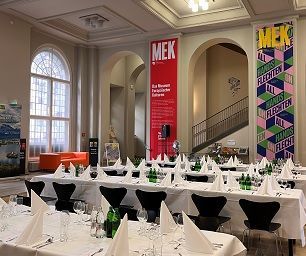
Köpenick
The baroque palace in Köpenick was built in 1677-1690 as the residence for Prince Friedrich of Brandenburg. It is regionally situated very delightfully, on an island in the river Dahme on the outskirts of Berlin’s district Köpenick.
Today the Schloss Köpenick is a branch of the Museum of Decorative Arts. The exhibited works, such as tapestries and precious centrepieces, were used as wall and room decorations in bourgeois and courtly dwelling rooms during the Renaissance, Baroque and Rococo.
The Aurora Hall, with its magnificent stucco ceiling, provides a dignified setting for ceremonies, weddings, concerts and dinners. The courtyard and the shoreline of the river Dahme invite to concerts, receptions and dinners during the warmer months.
Today the Schloss Köpenick is a branch of the Museum of Decorative Arts. The exhibited works, such as tapestries and precious centrepieces, were used as wall and room decorations in bourgeois and courtly dwelling rooms during the Renaissance, Baroque and Rococo.
The Aurora Hall, with its magnificent stucco ceiling, provides a dignified setting for ceremonies, weddings, concerts and dinners. The courtyard and the shoreline of the river Dahme invite to concerts, receptions and dinners during the warmer months.

